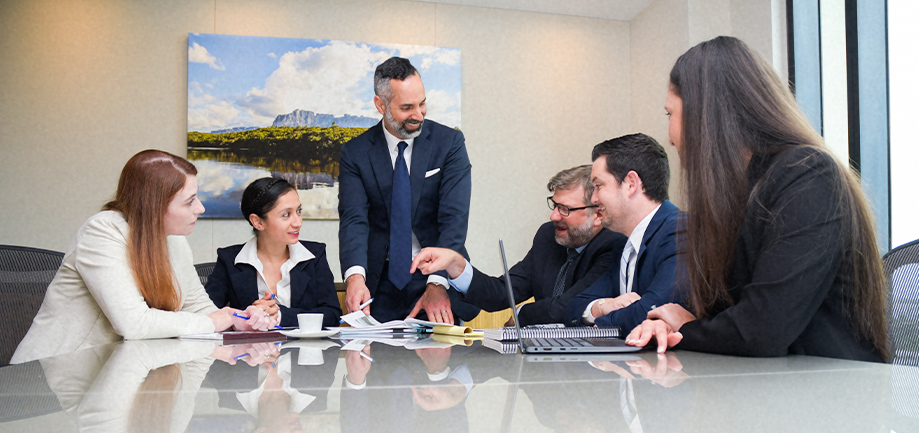Unfortunately, chronic back pain is a very common condition people suffer throughout the world. In the U.S., nearly 65 million people report having recent back pain episodes.
Back pain is one of the leading reasons why people see a physician or miss workdays. It’s even possible for school-age children to experience back pain.
Not All Back Pain Is the Same
Some people may experience back pain that is a dull, unrelenting ache while others may experience a sudden, sharp, or shooting sensation. The pain can occur abruptly due to an accident, by lifting a heavy object, or it can exacerbate throughout the years.
Infrequent physical activity followed by challenging exercise may also prompt back pain.
The two types of back pain include:
- Acute
- Chronic
Acute Back Pain
This type of back pain is short-term and tends to last anywhere from a day or two to several weeks. Most people experience acute back pain. It usually gets better on its own after a few days of self-care and there is no remaining function loss. Although, everybody is different and it may take a few months for some people to recover.
Chronic Back Pain
This condition is characterized by pain that lasts for at least 12 weeks, even once the initial injury or original reason for the acute back pain has received treatment.
Roughly 20% of those who are impacted by acute low back pain contract chronic low back pain with unrelenting symptoms after a year has passed. It is sometimes possible for treatment to relieve chronic low back pain, but much of the time the pain doesn’t go away regardless of medical and surgical care.
Common Causes of Chronic Back Pain
Most people experience back pain as a result of a mechanical cause. This occurs when there is a disruption in the way the back’s components conjoin and move. The back’s components include:
- The spine
- Muscle
- Intervertebral discs
- Nerves
Some common mechanical causes of chronic back pain include:
- Congenital
- Skeletal Irregularities
- This includes scoliosis (a spinal curvature), lordosis (irregularly defined lower back arch), kyphosis (extravagant outward arch of the spine), as well as other congenital spine disorders.
- Spina Bifida
- This occurs when the spinal cord and/or its protective shield does not develop completely and can prompt issues with vertebrae malformation and irregular sensations. Paralysis is also possible.
- Skeletal Irregularities
- Injuries
- Sprains
- Torn or overstretched ligaments.
- Strains
- When tendons or muscles tear.
- Spasms
- When a muscle or group of muscles contract abruptly.
- Traumatic Injuries
- Among other ways, these can occur as a result of playing sports, vehicle accidents, or falls that can cause harm to tendons, ligaments, or muscles. This causes pain and compresses the spine which then prompts discs to rupture or herniate.
- Sprains
- Degenerative Issues
- Intervertebral Disc Degeneration
- This condition occurs when the rubbery discs in the back wear down through aging and lose their ability to provide cushion.
- Spondylosis
- The spine’s natural degeneration through everyday life occurring in the spines’ joints, discs, and bones as people age.
- Arthritis or Other Inflammatory Conditions
- This includes osteoarthritis, rheumatoid arthritis, and spondylitis.
- Intervertebral Disc Degeneration
- Nerve and Spinal Cord Issues
- Spinal nerve compression, inflammation, or injury
- Sciatica
- Occurs when something presses on the sciatic nerve causing a shock-like or burning low back pain in combination with pain throughout the buttocks down one leg.
- Spinal Stenosis
- When the spinal column narrows and puts pressure on the spinal cord and nerves.
- Spondylolisthesis
- Occurs when a lower spinal vertebra moves out of place, causing the nerves exiting the spinal column to pinch.
- Herniated or Ruptured Disc
- When the intervertebral discs are compressed and protrude outward.
- Infections
- Involving:
- Vertebra (osteomyelitis)
- Intervertebral discs (discitis)
- Sacroiliac joints that connect the lower spine to the pelvis (sacroiliitis)
- Involving:
- Cauda Equina Syndrome
- When a ruptured disc puts pressure on the spinal canal and on the bundle of lumbar and sacral nerve roots. If this condition is not treated, lifelong neurological damage can occur.
- Osteoporosis
- A degenerative decrease in bone density and strength leading to painful vertebrae fractures.
- Non-Spine Sources
- Kidney Stones
- May lead to sharp pain in the lower back that typically occurs on one side.
- Endometriosis
- When uterine tissue builds up in areas outside of the uterus.
- Fibromyalgia
- A chronic pain ailment that involves extensive muscle pain and fatigue.
- Tumors
- A tumor can put pressure on or deteriorate the bony spine or spinal cord and nerves. It can occur outside the spine or elsewhere in the back.
- Pregnancy
- After giving birth, the painful symptoms almost always fully disappear.
- Kidney Stones
Treating Chronic Back Pain
Unsurprisingly, some of the most common claims for long-term disability benefits are based on back pain. If you suffer from chronic low back pain, you may be able to recover long-term disability benefits to help you pay for ongoing treatment and other costs associated with the condition.
Surgical treatment is not always necessary for those who suffer from chronic back pain. However, the following symptoms may indicate that surgery is necessary:
- New or worsening bowel/bladder problems
- Limb weakness
- Issues with gait and balance
- Verification of increased (brisk) reflexes
If surgery is not necessary, there are other ways to treat chronic back pain, including:
- Physical therapy
- Mindfulness and meditation
- Diet
- Lifestyle changes
- Injection-based treatments (nerve blocks, epidural steroid injections, nerve ablations, etc.)
- Alternative treatments (acupuncture, massage, biofeedback therapy, laser therapy, electrical stimulation, etc.)
- Pharmacological treatments (analgesics, anti-inflammatory drugs, muscle relaxers, etc.)
Suffering from chronic low back pain is not easy. It is often debilitating and tends to take over one’s life. If this sounds like you, it may be possible to recover long-term disability benefits for your condition. Don’t hesitate to reach out to our skilled team right away to learn how we can help.
Call Dabdoub Law Firm today at (800) 969-0488 to speak with an experienced attorney about your case.

